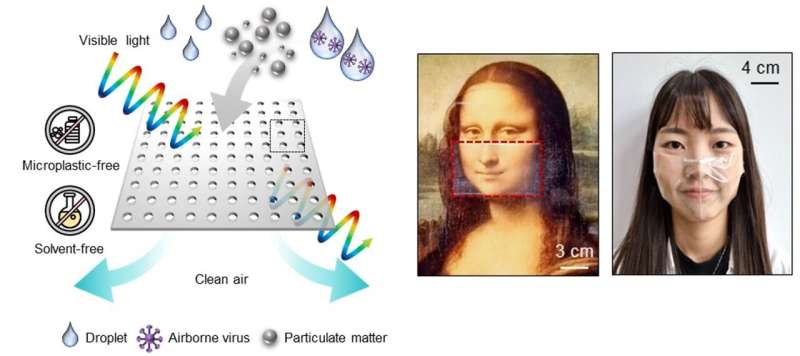This article has been reviewed according to Science X's editorial process and policies. Editors have highlighted the following attributes while ensuring the content's credibility:
fact-checked
peer-reviewed publication
trusted source
proofread
Researchers develop microplastic-free transparent mask

The Korea Institute of Industrial Technology (KITECH) has introduced a new solution in the form of a transparent mask, addressing concerns surrounding microplastic pollution and harmful solvents of conventional fibrous masks.
Amidst the challenges posed by the COVID-19 pandemic, the widespread adoption of masks became imperative. However, conventional masks fabricated using polypropylene microfibers presented unpredicted drawbacks. These opaque masks obscured facial expressions, impeding communication and posing challenges for language acquisition, particularly among children.
Since 2015, researchers have endeavored to develop transparent mask alternatives to enhance communication and facial recognition. However, previous attempts relied on nanofiber materials, leading to microplastic generation and solvent use, raising environmental and safety concerns.
The new type of mask, first proposed by Dr. Hyeonjin Eom, is a film-based transparent mask fabricated using commercial polypropylene film. It ensures transparency and safety without the use of harmful solvents or microplastics. Fabricated by using corona discharge and microneedle stamping processes, the mask features a micro-hole porous film with electrostatic properties, offering superior filtration efficiency (>99% for PM10 particulate matter) while maintaining breathability.
Dr. Eom explains the advantages of the film-type mask, highlighting its safety, affordability, and simplicity in manufacturing. Ongoing research aims to enhance nanoparticle filtration efficiency, preparing for potential future outbreaks and facilitating seamless face-to-face communication with transparent masks.
The findings are published in the journal Science of The Total Environment.
More information: Woo Jin Lee et al, Scalable, solvent-free transparent film-based air filter with high particulate matter 2.5 filtration efficiency, Science of The Total Environment (2023). DOI: 10.1016/j.scitotenv.2023.165197

















